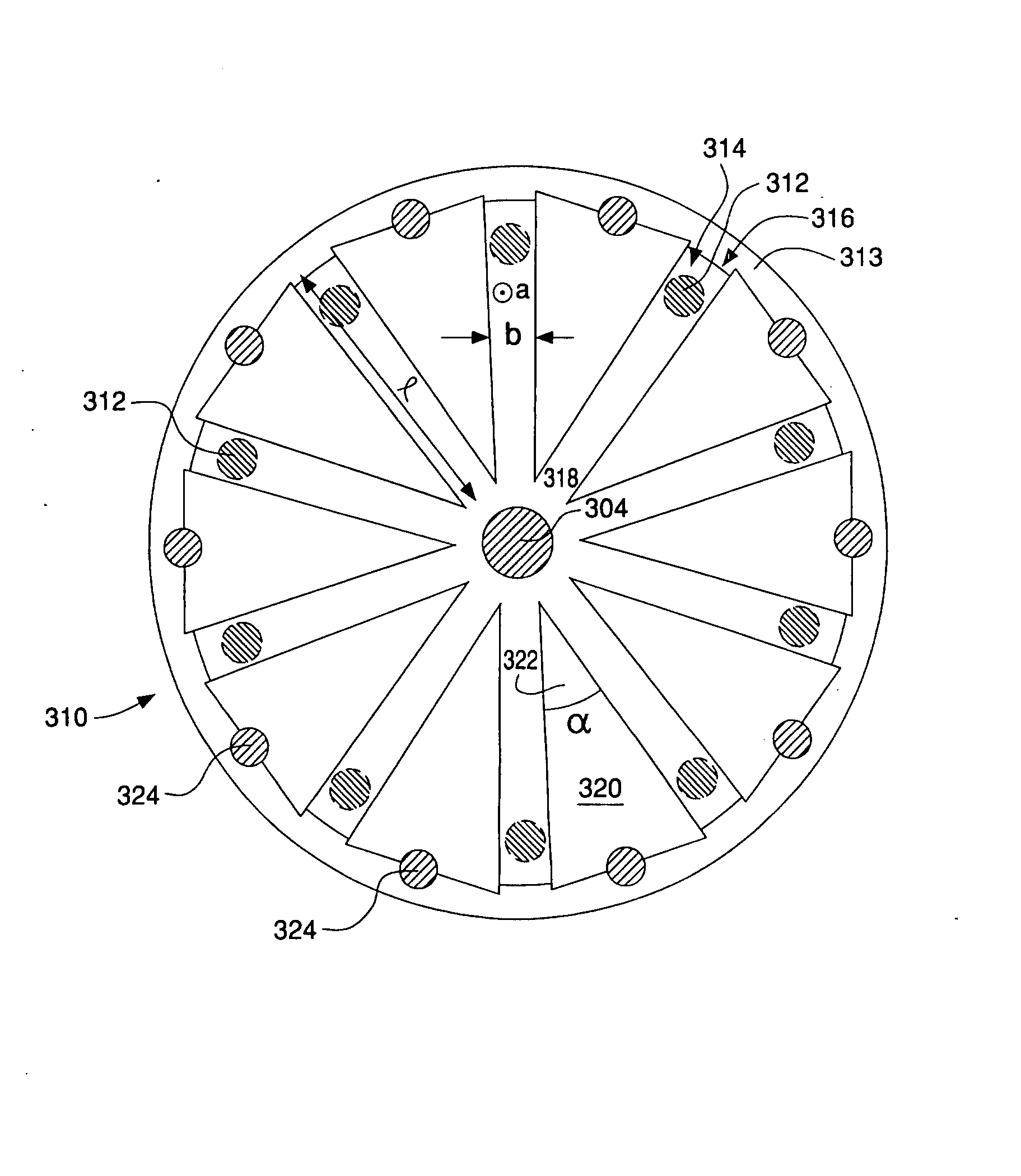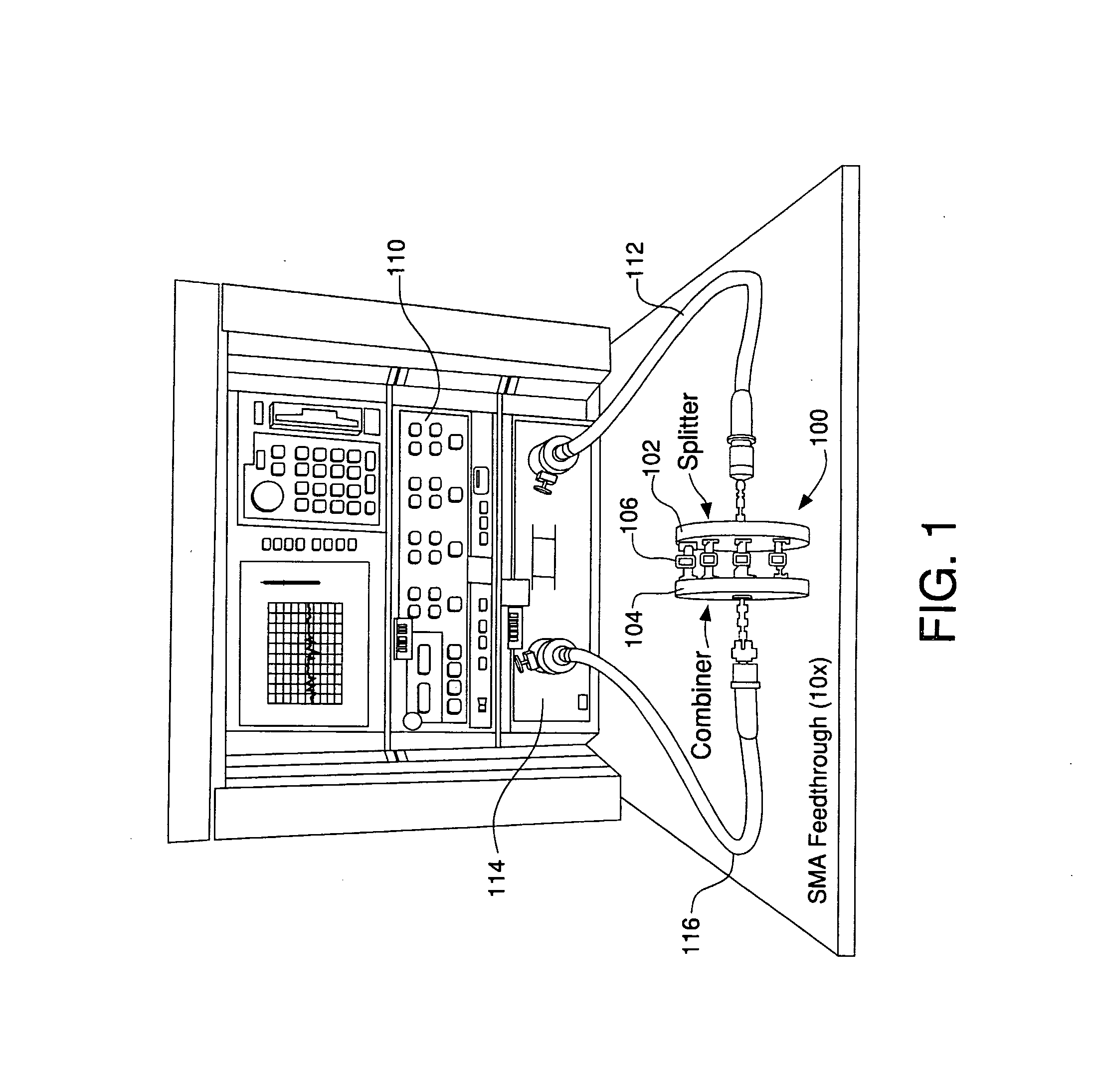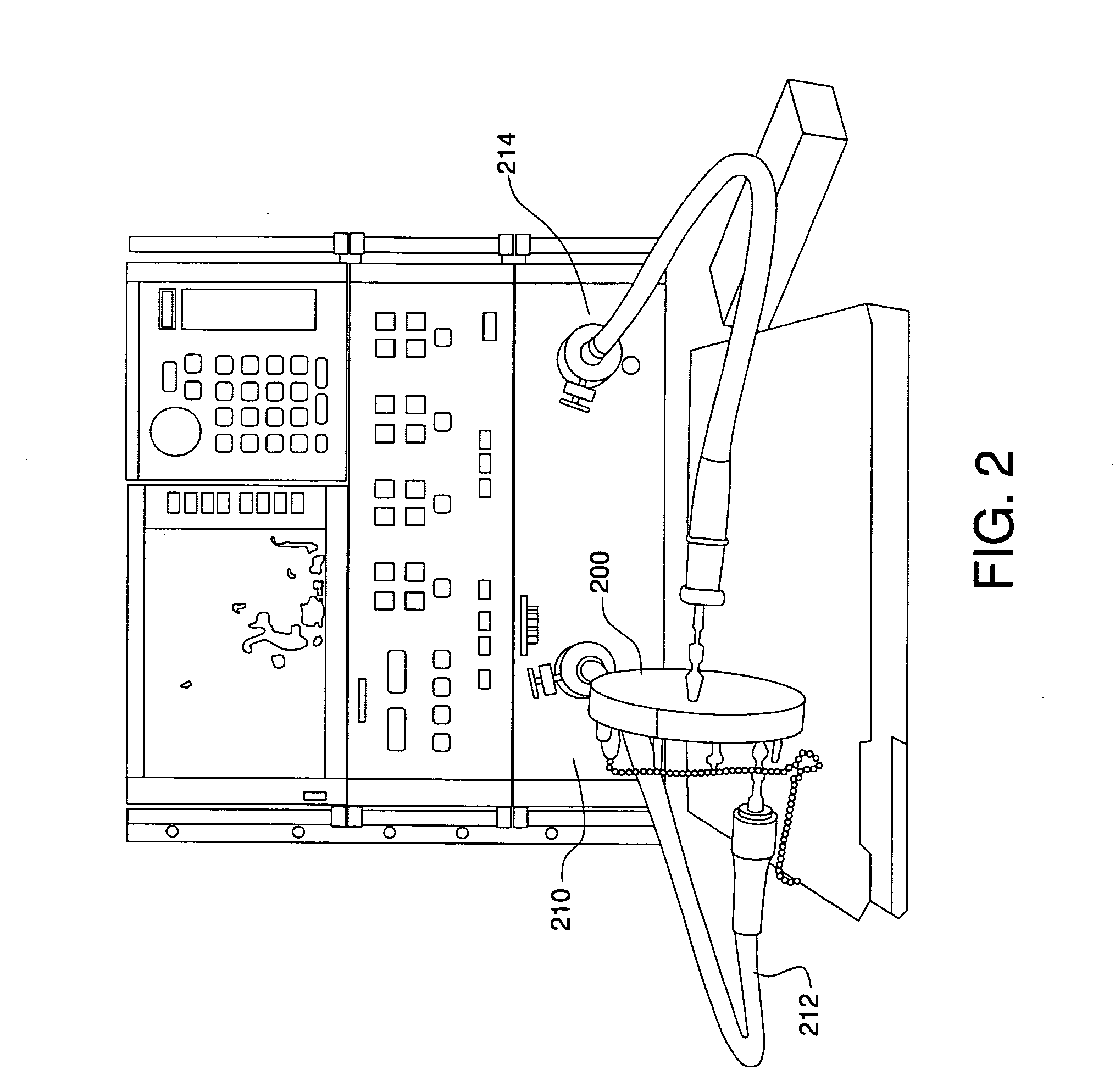Radial power divider/combiner using waveguide impedance transformers
a technology of waveguide impedance transformer and power divider, which is applied in the direction of amplifiers, amplifiers with semiconductor devices/discharge tubes, amplifiers, etc., can solve the problems of high power consumption, high cost, and high power consumption, and achieve high precision, low cost, and mass production
- Summary
- Abstract
- Description
- Claims
- Application Information
AI Technical Summary
Benefits of technology
Problems solved by technology
Method used
Image
Examples
Embodiment Construction
[0027]FIG. 1 depicts an example embodiment of a radial divider-combiner 100 according to the invention. As shown, the radial divider-combiner 100 includes a divider 102 and a combiner 104. A signal generator 110 provides to the divider 102 an input signal having an amplitude and frequency. The input signal may or may not be modulated. As shown, the signal generator 110 may be a test device or simulator, for example, that provides the input signal to the divider 102 via a coaxial cable 112. In operation, the signal generator 110 may be any device that provides a signal to the radial divider-combiner 100. The coaxial cable 112 may be attached to the divider 102 via a connector, such as an SMA connector, for example.
[0028] Inside the divider 102, the input signal is divided into a plurality, N, of individual signals. Each individual signal has roughly the same amplitude and frequency as the input signal. The individual signals are provided to respective amplifiers 106. The amplifiers ...
PUM
 Login to View More
Login to View More Abstract
Description
Claims
Application Information
 Login to View More
Login to View More - R&D
- Intellectual Property
- Life Sciences
- Materials
- Tech Scout
- Unparalleled Data Quality
- Higher Quality Content
- 60% Fewer Hallucinations
Browse by: Latest US Patents, China's latest patents, Technical Efficacy Thesaurus, Application Domain, Technology Topic, Popular Technical Reports.
© 2025 PatSnap. All rights reserved.Legal|Privacy policy|Modern Slavery Act Transparency Statement|Sitemap|About US| Contact US: help@patsnap.com



